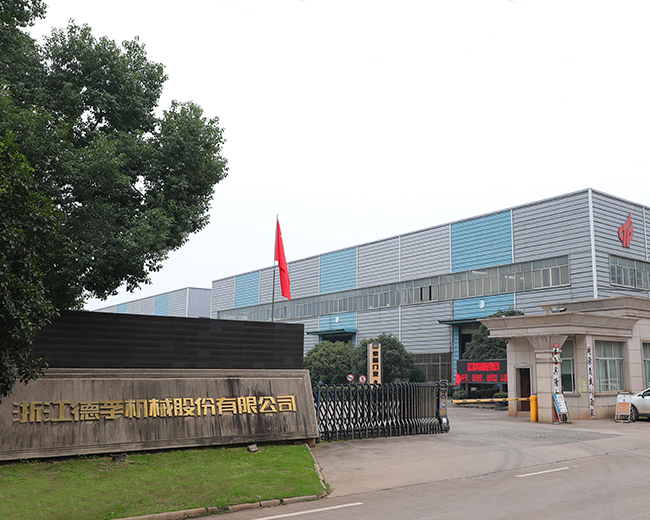DM2 Gantry Closed-Door Double Crankshaft Precision Steel Frame Punching Machine
Metallic Processing Machinery Factory

WELCOME TO DEFU!
The company mainly produces various types of hydraulic presses, various four-column and gantry hydraulic presses with dozens of specifications, hundreds of varieties of hydraulic and forging equipment, as well as open, closed, single-point, double-point, and four-point precision punching equipment and products. It is suitable for many industries and fields such as automobiles, aerospace, nuclear power, ships, home appliances, communications, etc. The company's products have always been recognized by domestic and foreign customers for their exquisite design, reasonable prices, quality, fast after-sales service, and technical support. They are sold well in more than 30 domestic provinces, cities, and districts, and are exported to the United States, Europe, and Southeast Asia. , the Middle East, Africa, and other regions and dozens of countries. The company pays attention to scientific and technological progress and has built a technology center that is suitable for its development. It has a scientific research team of dozens of people with reasonable structure, completely professional and rich experience, and strong independent research and development capabilities.
Latest News
The Evolution of Precision and Speed in Metallic Processing Machinery
Precision control in metallic processing machinery is achieved through a combination of advanced technologies and meticulous engineering. Modern CNC (Computer Numerical Control) machines are a prime example of this evolution. These machines use computer systems to control the movement and operation of machinery, allowing for incredibly precise cuts and shapes. The integration of CAD (Computer-Aided Design) software with CNC machines further enhances precision by enabling designers to create highly detailed and complex models that the machines can replicate with remarkable accuracy.
Servo motors and linear encoders play crucial roles in ensuring precision. Servo motors provide the necessary force and movement control, while linear encoders offer feedback on the machine's position. This feedback loop helps in maintaining accuracy, even during high-speed operations. Additionally, advanced sensor technology allows for real-time monitoring and adjustments, ensuring that any deviations from the desired specifications are promptly corrected.
Speed Enhancements in Metallic Processing Machinery
Speed is another critical aspect of metallic processing machinery. The ability to perform tasks quickly without compromising quality is essential in today's fast-paced industrial environment. Innovations in machinery design and materials have led to significant improvements in operational speed.
High-speed machining (HSM) techniques have revolutionized the industry. By using advanced cutting tools and optimizing cutting parameters, HSM enables machines to operate at higher speeds while maintaining accuracy. This technique reduces cycle times and increases productivity, making it an invaluable asset in manufacturing.
What Does an Industrial Metal Press Include?
An industrial metal press is a versatile piece of equipment used to shape, cut, and form metal into various products. These machines are essential in industries such as automotive, aerospace, and construction, where metal components are integral to the final products. An industrial metal press typically includes several key components:
Frame
The frame is the structural backbone of the metal press. It provides stability and support to the entire machine, ensuring that all components operate smoothly and efficiently. Frames are usually made from high-strength materials like cast iron or steel to withstand the immense forces generated during operation.
Bed
The bed is the flat surface on which the metal workpiece rests during processing. It must be robust and precisely machined to ensure accuracy. The bed often includes T-slots or other fixtures to hold the workpiece securely in place.
Ram
The ram is the moving part of the press that applies force to the workpiece. It is powered by hydraulic, mechanical, or pneumatic systems, depending on the type of press. The ram's movement and force are carefully controlled to achieve the desired shape and size of the metal piece.
Die
Dies are specialized tools attached to the ram and bed. They come in various shapes and sizes, designed for specific tasks such as cutting, bending, or stamping. The die configuration determines the final shape of the metal product.
Control System
Modern metal presses are equipped with advanced control systems that allow operators to set precise parameters for each operation. These systems can include touchscreens, programmable logic controllers (PLCs), and other user-friendly interfaces. The control system ensures consistency and repeatability in production.
Safety Performance of Metal Processing Equipment
Safety is a paramount concern in the operation of metal processing equipment. The potential for injury or accidents is high due to the powerful forces and sharp tools involved. Therefore, ensuring the safety performance of these machines is critical.
Safety Features and Protocols
Modern metal processing equipment is designed with a range of safety features to protect operators. These include emergency stop buttons, safety guards, and interlock systems. Emergency stop buttons allow operators to quickly halt the machine in case of an emergency, preventing accidents. Safety guards cover moving parts and sharp edges, reducing the risk of injury. Interlock systems ensure that the machine cannot operate unless all safety guards are in place and the machine is properly set up.
Training and Awareness
Operator training is another crucial aspect of safety performance. Proper training ensures that operators understand how to use the machinery correctly and safely. Training programs often cover machine operation, maintenance, and emergency procedures. Additionally, promoting a culture of safety in the workplace encourages operators to remain vigilant and report any potential hazards.
Regular Maintenance and Inspections
Regular maintenance and inspections are essential for ensuring the safe operation of metal processing equipment. Scheduled maintenance checks can identify and address potential issues before they bring about accidents. Inspections should include checking safety features, ensuring that all guards and interlocks are functioning correctly, and verifying that the machine is operating within its specified parameters.


 EN
EN



















